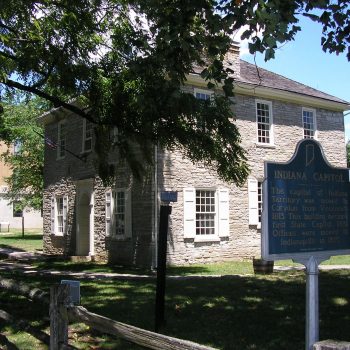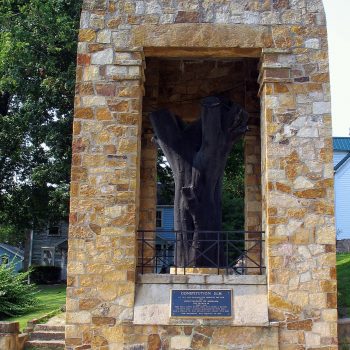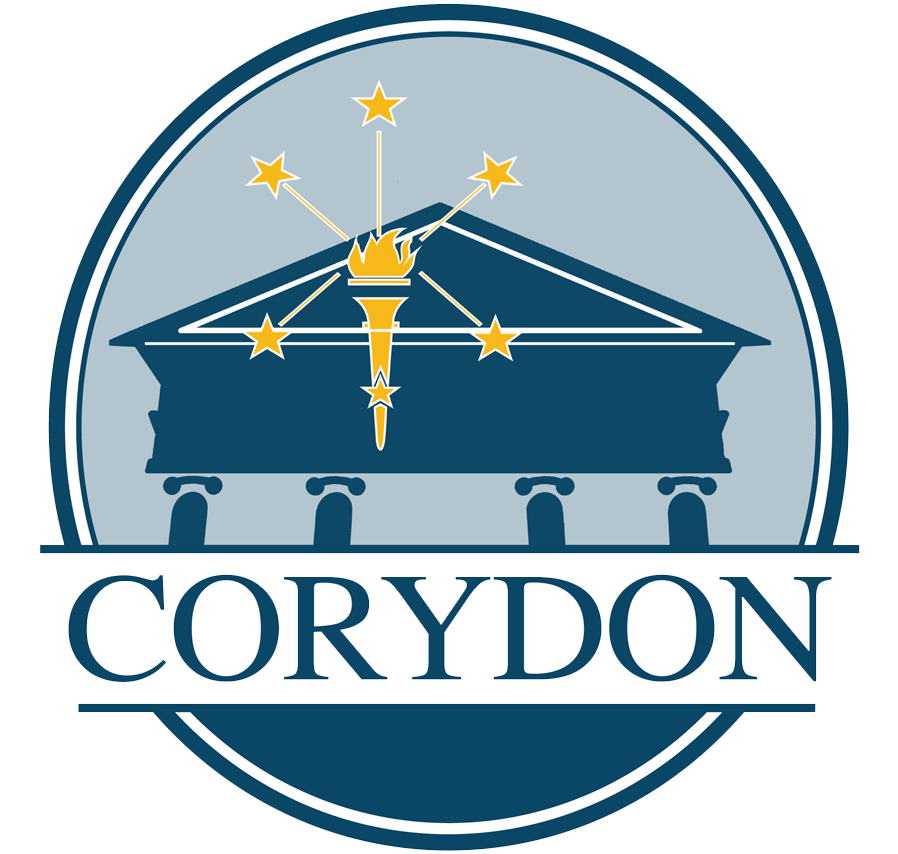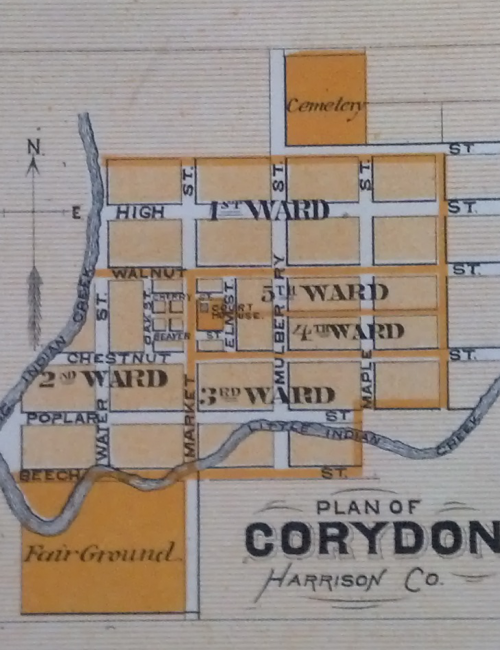1808
Corydon was founded in 1808 and served as the capital of the Indiana Territory from 1813 to 1816. It was the site of Indiana’s first constitutional convention, which was held June 10–29, 1816. Forty-three delegates convened to consider statehood for Indiana and drafted its first state constitution. Under Article XI, Section 11, of the Indiana 1816 constitution, Corydon was designated as the capital of the state, which it remained until 1825, when the seat of state government was moved to Indianapolis. In 1863, during the American Civil War, Corydon was the site of the Battle of Corydon, the only official pitched battle waged in Indiana during the war. More recently, the town’s numerous historic sites have helped it become a tourist destination. A portion of its downtown area is listed in the National Register of Historic Places as the Corydon Historic District. As of the 2020 census, Corydon had a population of 3,153.


Corydon became the second capital of the Indiana Territory on May 1, 1813, when it was relocated from Vincennes in Knox County. Opponents of William Henry Harrison, the former territorial governor, wanted to move the capital away from his political stronghold in Knox County. Supporters of the move felt that relocation of the territorial capital to the east would provide a more centralized location for its citizens, especially after its western portion was reorganized to form the Illinois Territory in 1809.
Corydon competed with Charlestown, Clarksville, Lawrenceburg, Madison, and Jeffersonville to become the new territorial capital. Dennis Pennington, a Harrison County representative and the speaker of the territorial legislature’s lower house, helped secure the town’s selection during the 1813 session of the Indiana Territory’s general assembly. Pennington pointed out that Corydon would be an ideal location. The Harrison County court had approved a design for a new county courthouse on Corydon’s public square in 1811 and it could be used as an assembly building for the territorial legislature. Pennington supervised construction of the limestone courthouse, which was nearly completed when Indiana’s first state legislature convened at Corydon in 1816. Prior to 1816, the territorial legislature met in the original county courthouse on High Street.
Paul and Susannah Mitchem became Quakers and immigrated to Harrison County from North Carolina in 1814, bringing with them 107 slaves whom they freed after arriving. Most of the former slaves then settled around the town of Corydon. Although some of the former slaves left, the group became one of the largest communities of free blacks in the state.
1813-1816
1816-1825
On November 4, 1816, the Indiana General Assembly met for the first time at Corydon under the new constitution and state government. President James Madison signed the congressional resolution admitting Indiana as the nineteenth state in the Union on December 11, 1816, and Corydon began a new era as the first state capital of Indiana.
The Town of Corydon was incorporated by a vote of the eligible voters on March 3, 1817.
The Harrison County courthouse, now known as the Old Capitol, served as Indiana’s first state capitol building. It housed state government offices from 1816 until 1825. Several other historic structures in Corydon date from the early statehood era, including the Governor’s Mansion and the Old Treasury Building (Indiana’s first state office building), which were built in 1817, and the Colonel Thomas Lloyd Posey home, among others. Corydon’s Grand Masonic Lodge, the first in the state, was built in 1819.
During the years Corydon served as a territorial and state capital, it was home to a number of politicians; notable residents during this time included Davis Floyd, a prominent local politician; two governors of Indiana, Jonathan Jennings and Ratliff Boon (the state’s first and second governors, respectively); Dennis Pennington, the first Speaker of the Indiana Senate; and William Hendricks, Indiana’s first U. S. Representative, its third governor, and a U.S. Senator.
The state constitution’s provision making Corydon the seat of state government was not a popular one, especially among the citizens of rival towns. Others expressed concern that the town’s geographic location in the extreme southern part of Indiana would become inconvenient as the state’s population center shifted northward; however, Dennis Pennington and other Harrison County representatives to the Indiana General Assembly successfully resisted attempts to move the seat of government from Corydon until 1825. Governor Hendricks signed a legislative bill in 1824 to move the state capital to Indianapolis, effective January 10, 1825.

Read more about our history at our Wikipedia Page:

With the demise of the iron industry, Oregon Iron & Steel turned its attention to land development. It built a power plant on Oswego Creek from 1905 to 1909, and following the incorporation of the City of Oswego in 1910, sought permission to erect power poles to provide electricity to the community.
1905 - 1910
1930s
Paul Murphy developed the Oswego Lake Country Club to promote Oswego as a place to “live where you play.” By the 1930s, its growth as a year-round living environment was well underway. Murphy built the first water system to serve the west end of the city, and encouraged noted architects to design fine homes during the 1930s and 1940s.


Residential development around the perimeter of Oswego Lake accelerated in the 1940s and 1950s. With the annexation of part of Lake Grove to the west in 1960, the name of the city was changed to Lake Oswego. Today, Lake Oswego is considered one of the finest residential communities in Oregon.


